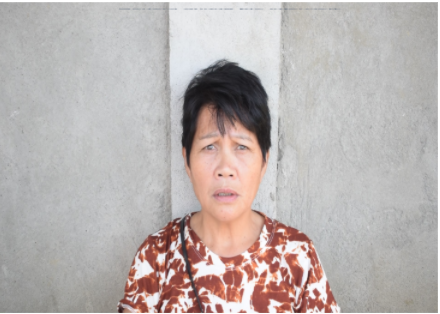Genera Mangili, an Ibaloi-Kankanaey, a mother of 3 and a grandmother of 4, lived and had her own family at Ucab, Itogon, Benguet. Barangay Ucab is a mining community located at the central part of the municipality of Itogon, bounded by Barangay Loacan to the north, Barangays Virac and Poblacion to the south, Barangay Poblacion to the east and Barangays Gumatdang and Virac to the west. The municipality was identified as a high-risk area for landslide due to its steep slopes and mining as a contributory factor. Furthermore, a large area of Itogon – Barangays Luneta, Loacan, Ucab, Ampucao and Gumatdang – were declared as unsafe, uninhabitable and within the “no-build” zones by the Mines and Geosciences Bureau.
Genera’s family had experienced multiple typhoons but one notable typhoon that happened last September 15, 2018 (typhoon Ompong) made a huge impact on them. During the onslaught of the typhoon, several infrastructures such as roads, houses, pavements and water systems were damaged. Roofs were blown and some houses became inhabitable due to the ground cracks. Several landslide incidents also occurred in the area. The worst incident was the massive landslide in Level 070 at Barangay Ucab where at least 80 individuals were buried alive. This incident led to the stoppage of small scale mining activities in the entire Cordillera Region that affected thousands of small scale miners. Due to this, many small scale miners are having a difficult time to put food on the table especially that mining is their main source of livelihood. In order to provide for the needs of their family, some looked for supplementary livelihood opportunities like carpentry and per-day labor. Others were forced to work outside the municipality to make ends meet but for some, this became a challenge especially that they relied on mining for how many years.
In sitio Sappat and Upper Ucab where Genera’s family resides, the community experiences a high volume of water runoff every time there are heavy rains. This water runoff flows directly to the residential areas causing flood, soil erosion and damage to properties. This became a burden most especially to the school children for they always get wet whenever there is a strong rain. During the onslaught of typhoon Ompong, Genera’s family became uneasy. “Rinmwar kami nga nangdalus ijai canal ta ada pagnaan ti danum” (We went outside and cleaned the canal for the water to flow), Genera said.
The residents that are affected by the high volume of water coming from the road, specifically the children going home from the school. Before the pandemic, the children are having a difficult time going to their houses especially when it is raining because of the high volume of water from the road that is affecting their way home. Every time that it is raining the children are going home wet due to the rain which may cause illnesses. The canal had helped in redirecting the high volume of water which had reduced the water running down to the pathways and the road.
The people of barangay Ucab are still recovering from the effects of typhoon Ompong and then comes the COVID-19 pandemic that hit the municipality. This worsened their life situation especially the small scale miners. It did not only affect their source of livelihood but also their mental well-being.
With Barangay Ucab being declared as unsafe and highly susceptible to landslide, Genera is concerned with the safety of her family. She is thankful that she participated in the Community-Based Disaster Risk Reduction Management (CBDRM) Training last November 30 – December 1, 2020. “At least I gained knowledge about the different hazards that may affect my family and what to do before, during and after a disaster”, Genera said.
The objective of the project was to redirect the high volume of water coming from the road to the main drainage canal. In the past few weeks, the canal was observed during strong rains and they have known that most of the water from the road runs down to the 2nd water catchment. With the extension of the canal the water had been directed to the main drainage canal, in which the water running down from the road is controlled by the extended canal. The members of the Sappat Indigenous Community Organization have provided the labor of the project also with the maintenance of the canal. Through the Survivor and Community-Led Response under the Enhancing Capacities in Disaster Risk Reduction Management for more Resilient People and Communities (Encap) – Phase 2 project of Cordillera Disaster Response and Development Services Inc. (CorDisRDS) supported by Diakonie Katastrophenhilfe (DKH) and Citizens Disaster Response Center (CDRC), Sappat Indegenous People’s Community Organization received support. Their proposed project was the extension and improvement of the community drainage system to divert the large volume of water away from the residential areas towards the main drainage canal.
“Agyaman kami ta dakel ti naitulong ti panang-improve ti canal ta isupay nga mangprotektar iti balay. Haanen nga kampurmi ti ag-ayosan ti napigsa nga danum,” (The improvement of the canal is a big help and an added protection to our houses since large volumes of water will not flow in the residential houses anymore and we are thankful for that.) Genera said.

